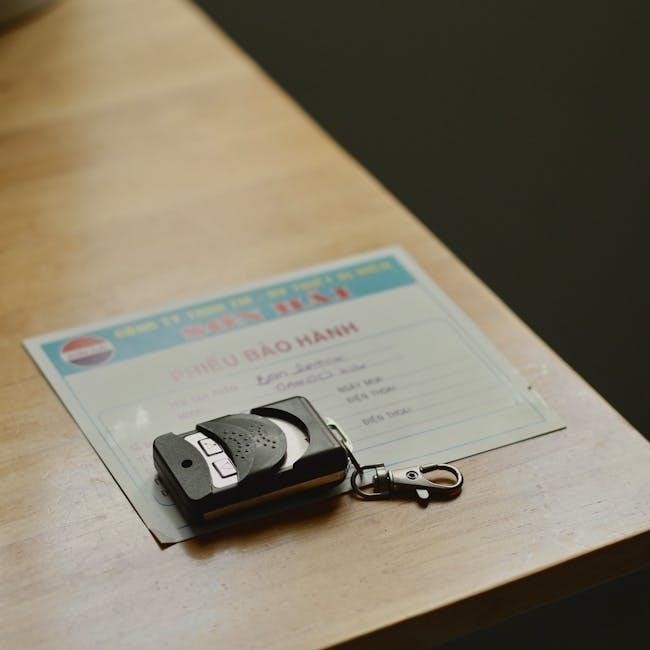Ergo 360 Manual: A Comprehensive Guide
Welcome to your comprehensive guide for the Ergobaby 360 carrier! This manual simplifies using your carrier safely and correctly‚ ensuring comfort and security for both you and your baby. We aim to provide accessible instructions for a versatile and ergonomic babywearing experience‚ promoting closeness and freedom.
The Ergobaby 360 carrier is a popular choice for parents seeking a versatile and comfortable way to carry their little ones. Designed with both parent and baby in mind‚ this carrier offers a range of carrying positions to adapt to your child’s developmental stages and your personal preferences. Whether you’re running errands‚ exploring the outdoors‚ or simply want to keep your baby close while having your hands free‚ the Ergobaby 360 aims to provide a secure and ergonomic solution.
This comprehensive guide will walk you through everything you need to know about the Ergobaby 360‚ from its key features and benefits to safety instructions and cleaning tips. We’ll explore each of the four carrying positions – front inward‚ front outward‚ hip‚ and back carry – with detailed instructions and helpful illustrations. You’ll also learn how to adjust the carrier for optimal comfort and fit‚ ensuring a pleasant experience for both you and your baby.
Furthermore‚ this manual addresses specific considerations for using the carrier with newborns‚ including weight restrictions and the use of the Ergobaby Infant Insert (if needed). We’ll also cover essential maintenance practices to keep your carrier clean and in good condition‚ as well as troubleshooting tips for common issues. Finally‚ we’ll point you to online resources where you can access the Ergobaby 360 manual and other helpful information.
Key Features and Benefits of the Ergobaby 360
The Ergobaby 360 carrier boasts a multitude of features designed to provide optimal comfort‚ safety‚ and convenience for both parents and babies. One of its most notable features is its four ergonomic carrying positions: front inward‚ front outward‚ hip‚ and back carry. This versatility allows you to adapt to your baby’s developmental stage and your personal preferences‚ ensuring a comfortable and supportive experience for both of you.
The carrier’s structured bucket seat supports your baby in an ergonomic “M” shape position‚ promoting healthy hip development. The adjustable panel ensures proper head and neck support‚ particularly important for newborns and younger infants. The padded shoulder straps and wide waistband distribute your baby’s weight evenly‚ minimizing strain on your back and shoulders‚ allowing for longer and more comfortable carrying sessions.
Furthermore‚ the Ergobaby 360 is made from breathable materials‚ ensuring adequate airflow and preventing overheating. It is also machine washable‚ making it easy to keep clean and hygienic. The carrier’s intuitive design and adjustable straps make it easy to put on and take off‚ even when you’re on your own. With its combination of comfort‚ versatility‚ and ease of use‚ the Ergobaby 360 offers numerous benefits for active parents and their little ones.

Safety Instructions and Precautions
Prioritizing safety is paramount when using the Ergobaby 360 carrier. Always read and understand the complete instruction manual before using the carrier. Ensure all buckles and straps are securely fastened before each use. Regularly inspect the carrier for any signs of wear and tear‚ and discontinue use if any damage is detected.
When placing your baby in the carrier‚ always support their head and neck. Ensure your baby’s face is always visible and not pressed against your body. Be mindful of your baby’s breathing and ensure their airways are clear at all times. Avoid bending at the waist while carrying your baby; instead‚ bend at the knees to protect your back and the baby’s safety.
Be cautious when using the carrier in environments with potential hazards‚ such as hot surfaces‚ sharp objects‚ or moving vehicles. Never use the carrier while engaging in activities that could compromise your baby’s safety‚ such as cooking‚ running‚ or riding a bicycle. Be aware of your surroundings and maintain a safe distance from obstacles. Always supervise your baby while they are in the carrier. The Ergobaby 360 is designed for babies weighing between 5.5kg and 20kg; for babies weighing between 3.2kg and 5.5kg‚ use the Ergobaby Infant Insert.
Carrying Positions: Front Inward Carry
The front inward carry is a classic and comforting position for both you and your baby. It allows for close contact and easy monitoring of your little one. To begin‚ securely fasten the waistband of the Ergobaby 360 carrier around your waist‚ ensuring it sits snugly but comfortably. Position the waistband so that the carrier’s body is centered.
Next‚ carefully position your baby in the carrier‚ ensuring their legs are in a natural‚ frog-legged position with their knees higher than their bottom. Their back should be supported in a gentle‚ curved position. Bring the carrier panel up and over your baby’s back‚ ensuring it reaches their neck for proper support. Fasten the shoulder straps‚ adjusting them to achieve a snug and secure fit. The straps should distribute your baby’s weight evenly across your shoulders and back.
Ensure your baby’s face is always visible and clear of obstructions. You should be able to easily monitor their breathing and well-being. Regularly check that your baby is comfortable and not overheating. This position is ideal for newborns and younger babies who need close contact and support. Always refer to the Ergobaby 360 instruction manual for detailed diagrams and specific instructions tailored to your baby’s age and size.
Carrying Positions: Front Outward Carry

The front outward carry allows your baby to explore the world around them‚ fostering curiosity and engagement. However‚ it’s crucial to ensure your baby has sufficient head and neck control before using this position. Typically‚ this position is suitable for babies around 5-6 months old‚ but always consult your pediatrician for guidance.
To transition to the front outward carry‚ start with the carrier waistband securely fastened around your waist. Ensure the carrier’s body is centered for balanced weight distribution. Next‚ position your baby facing outward‚ ensuring their legs are properly positioned with their knees bent and their bottom supported. The carrier panel should support their back comfortably.
Fasten the shoulder straps‚ adjusting them to provide a snug and secure fit without constricting your baby; Regularly monitor your baby for signs of overstimulation or discomfort. Limit the duration of the front outward carry to shorter periods‚ especially initially‚ to prevent overexertion. Always be mindful of your baby’s cues and switch back to a front inward carry if they become tired or fussy. Refer to the Ergobaby 360 manual for specific guidelines and safety precautions related to the front outward carry position.
Carrying Positions: Hip Carry
The hip carry position in the Ergobaby 360 offers a convenient way to carry your baby while keeping one arm free. This position is typically suitable for babies who have good head and neck control‚ usually around six months or older. Before attempting the hip carry‚ ensure you are comfortable and confident using the carrier in other positions.
To begin‚ securely fasten the waistband of the Ergobaby 360 around your waist‚ positioning it slightly higher than you would for a front carry. Then‚ position the carrier so that the panel is on the side of your hip where you intend to carry your baby. Carefully lift your baby and position them on your hip‚ ensuring their legs are straddling your body and their knees are higher than their bottom‚ maintaining an “M” shape.
Next‚ secure the shoulder strap across your body‚ adjusting it to provide a snug and supportive fit. Ensure your baby’s back is well-supported by the carrier panel. Always keep one hand on your baby for added security‚ especially when moving or bending over. Regularly check your baby’s position to ensure they are comfortable and their airway is clear. Refer to the Ergobaby 360 manual for detailed instructions and safety guidelines specific to the hip carry position.
Carrying Positions: Back Carry
The back carry position with the Ergobaby 360 is ideal for older babies and toddlers who want a higher vantage point and allows parents more freedom of movement. This position is generally recommended for babies who are at least six months old and have strong head and neck control. Before attempting the back carry‚ it is crucial to practice and become comfortable with the carrier in other positions‚ such as the front carry.
To safely transition your baby to the back carry position‚ you can use the “hip scootch” method or ask for assistance from another adult. With the hip scootch method‚ start by positioning your baby in the hip carry. Then‚ carefully scootch the carrier around your body until your baby is positioned on your back‚ ensuring their legs are straddling your waist and their knees are higher than their bottom.
Once your baby is in position‚ secure the shoulder straps‚ adjusting them to provide a snug and comfortable fit. Ensure that the chest strap is fastened and positioned correctly to prevent the shoulder straps from slipping. Always double-check all buckles and straps to ensure they are securely fastened before moving around. Regularly monitor your baby to ensure they are comfortable and their airway is clear. Consult the Ergobaby 360 manual for detailed instructions and safety precautions specific to the back carry position.
Adjusting the Carrier for Optimal Comfort and Fit
Achieving optimal comfort and fit with the Ergobaby 360 carrier is essential for both the wearer and the baby. A properly adjusted carrier ensures even weight distribution‚ preventing strain on the back and shoulders. Start by adjusting the waistband so it sits snugly around your waist‚ typically at your natural waistline or slightly higher‚ depending on your preference. The waistband should be parallel to the ground and feel secure but not too tight;
Next‚ adjust the shoulder straps to achieve a snug and comfortable fit. The straps should be tightened evenly to distribute the baby’s weight across your shoulders and back. Avoid overtightening‚ which can cause discomfort. The chest strap should be positioned at a comfortable height‚ typically across your chest or upper back‚ to prevent the shoulder straps from slipping. Ensure the chest strap is not too tight‚ as this can restrict breathing.

For the baby‚ ensure they are positioned correctly in the carrier‚ with their legs in an “M” shape‚ supporting their thighs and knees higher than their bottom. The carrier’s panel should support the baby’s back and neck adequately‚ especially for younger infants. Regularly check the fit and make adjustments as needed‚ especially as your baby grows. A well-adjusted Ergobaby 360 carrier provides a comfortable and ergonomic carrying experience for both parent and child.
Using the Carrier with Newborns (3.2kg ⎼ 5.5kg)
The Ergobaby 360 carrier can be used with newborns weighing between 3.2kg and 5.5kg‚ but it’s crucial to ensure proper support and positioning for their safety and comfort. When using the carrier with a newborn‚ the front inward carry position is recommended to provide optimal support for their developing neck and spine. If your baby weighs between 3.2kg and 5.5kg‚ using the Ergobaby Infant Insert is typically required.
The Infant Insert helps to properly position the newborn in the carrier‚ ensuring their legs are in the correct “M” shape and their back is adequately supported. Always refer to the Infant Insert’s instructions for proper usage. Before placing your newborn in the carrier‚ make sure all buckles and straps are securely fastened and adjusted to the correct settings. Gently position your baby inside the carrier‚ ensuring their face is visible and not pressed against your body.

Monitor your newborn closely while in the carrier‚ paying attention to their breathing and overall comfort. Do not use the front outward carry position with newborns‚ as they lack the necessary neck control. As your baby grows and develops stronger neck control‚ you can gradually transition to using the carrier without the Infant Insert‚ following the guidelines provided in the manual. Always prioritize safety and comfort when carrying your newborn in the Ergobaby 360.
Cleaning and Maintenance: Washing Instructions
Maintaining the cleanliness of your Ergobaby 360 carrier is crucial for hygiene and longevity. Regularly cleaning your carrier will help prevent the build-up of dirt‚ sweat‚ and spills‚ ensuring a comfortable experience for both you and your baby. The Ergobaby 360 carrier is machine washable‚ making the cleaning process relatively simple and convenient.
Before washing your carrier‚ it’s essential to prepare it properly. Begin by fastening all hook and loop fasteners (Velcro) and buckles to prevent them from snagging or damaging other items in the washing machine. Remove any detachable accessories‚ such as the infant insert or teething pads‚ and wash them separately according to their specific instructions. Place the carrier inside a laundry bag or pillowcase to provide extra protection during the wash cycle.
Use a mild detergent that is free of bleach‚ fragrances‚ and dyes to avoid irritating your baby’s sensitive skin. Select a cold water cycle and a gentle setting to minimize wear and tear on the carrier’s fabric and components. Once the wash cycle is complete‚ remove the carrier from the laundry bag and allow it to air dry completely. Avoid using a dryer‚ as high heat can damage the carrier’s buckles‚ straps‚ and elastic. Ensure the carrier is thoroughly dry before using it again to prevent mildew growth.
Troubleshooting Common Issues
Even with careful use‚ you may encounter some common issues while using your Ergobaby 360 carrier. This section provides solutions to frequently asked questions and potential problems. One common concern is discomfort during extended wear. Ensure the waistband is positioned correctly—snug but not too tight—at your natural waist. Adjust shoulder straps to distribute weight evenly. If back pain persists‚ consider adjusting the carrier position or taking breaks.
Another issue may be difficulty adjusting the carrier for a proper fit. Review the manual’s fitting instructions and watch online tutorials for visual guidance. Ensure all buckles are securely fastened and straps are adjusted symmetrically. If you’re using the carrier with a newborn‚ confirm the infant insert is correctly positioned. Baby’s comfort is paramount; check for proper leg positioning in an “M” shape‚ supporting their thighs and knees. If the baby seems fussy or uncomfortable‚ readjust the carrier or try a different carry position.
Buckle malfunctions are rare but possible. Inspect buckles regularly for damage or wear. Contact Ergobaby customer support for replacements if needed. Also‚ address fabric concerns like stains by spot-cleaning with mild soap and water. For persistent odors‚ try airing out the carrier or using a fabric refresher spray. This section aims to equip you with practical solutions for a smoother babywearing journey.
Where to Find the Ergobaby 360 Manual Online
Accessing the Ergobaby 360 manual online is a straightforward process‚ ensuring you have the information you need at your fingertips. The primary source for the manual is the official Ergobaby website. Navigate to the “Support” or “Help” section and search for “Ergobaby 360 Manual.” You’ll likely find a PDF version that you can view‚ download‚ and print for easy reference.
Manuals.Plus is another excellent resource for finding user guides and instruction manuals‚ including the Ergobaby 360 manual. Simply search their website for the carrier model to access a free‚ downloadable version. Several online retailers that sell the Ergobaby 360‚ such as Amazon or Target‚ may also provide a link to the manual on the product page. This allows you to quickly access the instructions while considering your purchase.
Additionally‚ try a general web search using keywords like “Ergobaby 360 manual PDF;” This will often lead you to various websites and forums where users have shared the manual. Remember to download the manual from reputable sources to avoid potential security risks. Having the manual readily available online ensures you can easily troubleshoot issues‚ review safety instructions‚ and maximize your carrier’s functionality.
